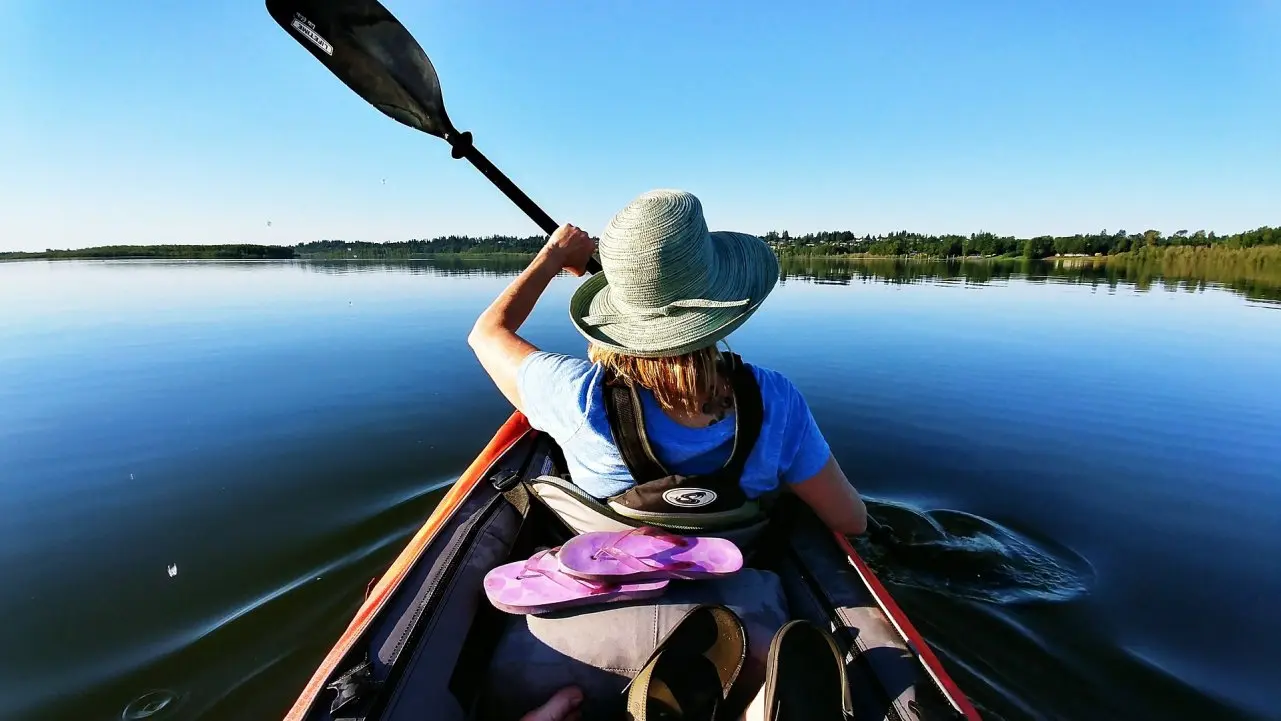Materials Used for Kayak Paddles
The most common materials used to construct kayak paddles are aluminum, plastic, fiberglass and carbon fiber. Here’s how they compare:
Aluminum Paddles - Aluminum shafts are affordable and durable, though they tend to be heavier. The stiffness transfers more energy into the water with each stroke. Best for recreational paddling.
Plastic Paddles - Cheapest option, usually made with polypropylene or ABS plastic. Extremely durable but heavier and not as efficient per stroke as other materials.
Fiberglass Paddles - Offer excellent balance between lightness, affordability, and durability. Responsive flex helps reduce strain on joints. All-around great choice for most kayakers.
Carbon Fiber Paddles - High-end paddles that are extremely lightweight yet stiff for maximized paddle efficiency. More expensive but perfect for touring or performance paddling.
Kayak Paddle Sizing and Length
Ensuring you choose the properly sized kayak paddle is crucial for good paddling mechanics and comfort. As a general rule of thumb, wider/larger kayakers need longer paddles while narrower kayaks require shorter paddles.
To determine ideal length, sit in your kayak and stretch out a paddle. The blade tip should reach between your chin and nose. Those new to kayaking may want to start on the shorter, more maneuverable end while experienced paddlers can use maximum lengths.
Blade Shape and Style
The blade is the part of the paddle that contacts the water and propels you forward with each stroke. Wider blades have more surface area to push more water but may catch wind. Narrow blades slice cleanly with less strain per stroke. Different activities call for different blade configurations:
Wide, spooned recreational blades – Best all-around option for casual paddling
Asymmetrical touring blades – Excellent acceleration and tracking for long distances
Smaller, narrow whitewater blades – Enhanced maneuverability on rivers
Oversized traditional blades – Extra power for tandem kayaks
Other Key Kayak Paddle Considerations
Feathering - Most paddles have blades offset 15-30 degrees to reduce wind resistance as you switch stroke sides. Beginners should start with 0 degrees for simplicity.
Grip - Contoured or oval grips that fit your hand are most comfortable during long paddling sessions. Many high-end paddles have adjustable grips.
Weight - Lightweight paddles reduce fatigue and joint strain but are pricier. Heavier paddles can actually build upper body strength.
Drip rings – Prevent pooled water from running down the shaft onto your hands and improve comfort.
Visibility – Bright colors help prevent losing paddles if dropped overboard.
Budget - Keep costs low with plastic or aluminum. Fiberglass and carbon fiber cost more but also enhance performance.
Getting Properly Fitted
The best way to evaluate paddles is to test them out on the water. Look for local kayak dealers that allow test drives so you can get a feel for different paddle types. Rentals are another great option. If possible, try out various materials, lengths, blade shapes and feather angles.
While researching specs and reviews is helpful, finding the right kayak paddle has a lot to do with personal fit and paddling style. Take your time testing out options so you can make the most informed decision.
Edited: Dec 13 by Adminai
